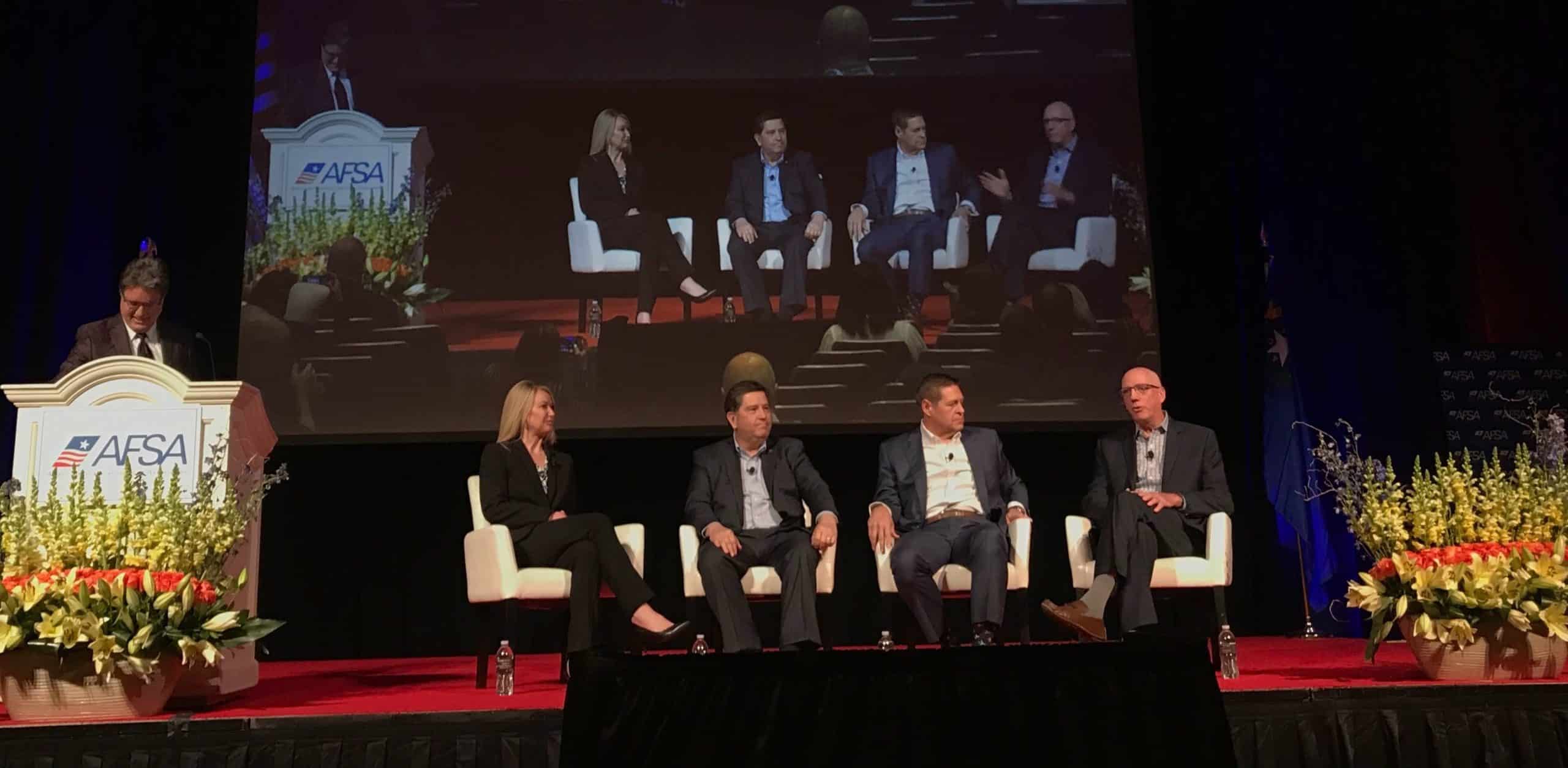Bank of America, Gateway Financial, HCA, TFS address consumer affordability concerns

LAS VEGAS — An anticipated slowdown in sales and an increase in the average transaction price for new vehicles are spurring lenders to address the “affordability issue,” facing the industry, four senior executives from the nation’s top lenders said during AFSA’s Vehicle Finance Conference last week.
To be fair, the auto industry is expected to remain resilient as economic fundamentals such as record-low unemployment rates and steady consumer confidence are positive factors against the “affordability issue,” said David Hollodick, senior vice president, Bank of America Dealer Financial Services. The unemployment rate is 3.6%, according to the U.S. Bureau of Labor Statistics.
Yet, total new vehicle sales for 2020 are expected to see a 0.8% decrease year over year to 16.9 million, according to TrueCar’s ALG forecast. As a result, there are “growing concerns around affordability,” Hollodick noted. Further, the average transaction price for a new vehicle is expected to rise 2.5% YoY to $36,348.
The question auto financiers need to ask themselves is: “How long can [the affordability issue] continue until it has a larger impact in the years ahead?” Hollodick said, noting that Bank of America anticipates the industry will feel the sting of affordability issues two to three years from now.
Toyota Financial Services, for one, forecasts stability for new vehicle sales.
“Last year was a fantastic year [for sales] and turned out better than everyone expected,” said Mark Templin, TFS president and chief executive. “January [2020] turned out better than everyone expected,” he said, noting that TFS anticipates vehicle sales to remain steady for a considerable period.
Additionally, Templin said that, despite industrywide affordability concerns, prime consumers are likely to pay off their auto loans before other debt. “When people have student loan debt, credit card debt, they will pay their auto loans first because they need their cars to go to work, so that’s a good advantage for us,” he said.
However, for subprime lender Gateway Financial Services, consumers prioritize paying off other debts first. “Affordability is key,” said President Kristin Karwat. “But when you are in the subprime space, you see consumers are more willing to pay their cell phone bill before their car loan.”
Further, Gateway becomes concerned when used-vehicle prices have the potential to increase as more consumers opt for trucks and SUVs, Karwat noted, adding, “Production still looks good today, and there is not a shortage of inventory, but in the used car space, we start to see what used inventory is going to look like a few years out, and you’re looking at these more expensive vehicles.
“You have to think: ‘How is the subprime consumer going to afford this long term?’ And those are the things that we’re looking at prioritizing in this space. It’s going to change the dynamic over the next couple of years.”
For captive Hyundai Capital America, a large lease portfolio is an area of business to focus on when new-vehicle transaction prices are expected to climb, noted President and Chief Executive Ross Williams. “As prices go up, you got to find a niche for consumers in affordability,” Williams said. “Stable off-lease volume provides an opportunity, especially as those vehicles have somewhat recent technology.” HCA boasts a $16.4 billion lease portfolio, according to Big Wheels Auto Finance data.
Another area for opportunity is an active CPO program, noted Templin of TFS.
“Our CPO business is doing really well right now,” he said. “Our dealers can get all the 3-year-old cars they want, but we are looking for creative ways to serve them up to 5- or 6-year-old cars because that’s what they need. That’s a sweet spot in the market.”
For more content like this, join us at the upcoming Auto Finance Sales & Marketing Summit, March 9-10 at the Omni San Diego. Visit www.SalesAndMarketingSummit.com to learn more.














